Dubplate Culture: Analogue Islands in the Digital Stream
Music Journalism
Dubplate Culture: Analogue Islands in the Digital Stream
Dubplate Culture: Analogue Islands in the Digital Stream
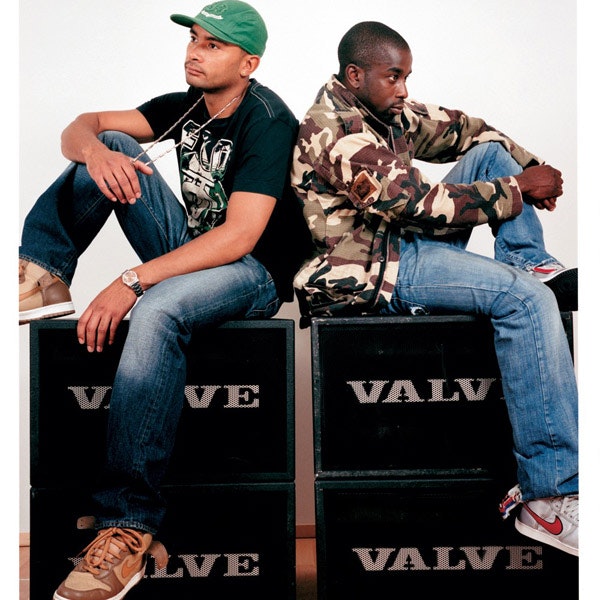
The era of dubplates is gone, despite a collection of reggae soundmen continuing the tradition. Matthew Bennett writes about its heyday, its demise and what we’re missing as a result.
Originally published by Red Bull Music Academy
October 2014
Words By Matthew J Bennett
“It’s completely dead,” grimly mourns Dillinja from behind his drink. “Dubplate culture has died.” The drum & bass producer is sitting with his business partner of Valve Recordings, Lemon D; a pair of men who once guided the flow of the drum & bass scene. They are performing a rhapsodic autopsy on the crucial role of dubplates in evolving dance music through the ’90s as jungle mutated into drum & bass and then into the ignition of UK garage. “Dubplate culture defined you as an artist,” adds Lemon D, AKA Kevin King. “It was always more than just cutting the actual plate.”
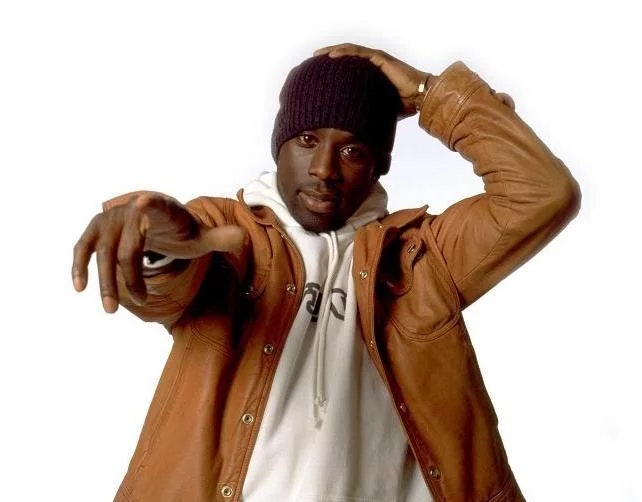
Often mentioned but rarely discussed, dubplates were once obsessively crafted musical artefacts that both controlled and evolved music scenes. “There are parts about cutting dubs that I really miss. Then there are bits of it that I don’t,” murmurs DJ Hype as he drives us through East London after broadcasting his Kiss FM show. “A dubplate is a one-off pressing of a record that is made out of acetate and metal,” Hype explains. “It was the cheapest and best way of being able to play a new song on a soundsystem or in a club. So back in the day you had two choices: you could come with a cassette or you had the dubplate. It’s a way of testing out a song, but the Jamaican soundsystem clash culture started using it for more exclusive public performances for a one-off song that no one else has got.”
You’d still be at Music House at 9 PM clinging on to get a dubplate off someone even if you thought you might be missing your gig. - Lemon D
Dillinja’s diagnosis of the scene being dead rings true for any producer or DJ except those in reggae. Jamaican selectors may still cut “specials” which reference a rival’s name, or perhaps they cut a dubplate after persuading a legendary singer to mention their own soundsystem at the start of an anthem for killer prestige in a sound clash. But where the lathes once produced a week-long torrent of innovative music, now their output is just a revered and treasured trickle of reggae re-rubs. The jungle, drum & bass and garage producers are no longer found here anymore.
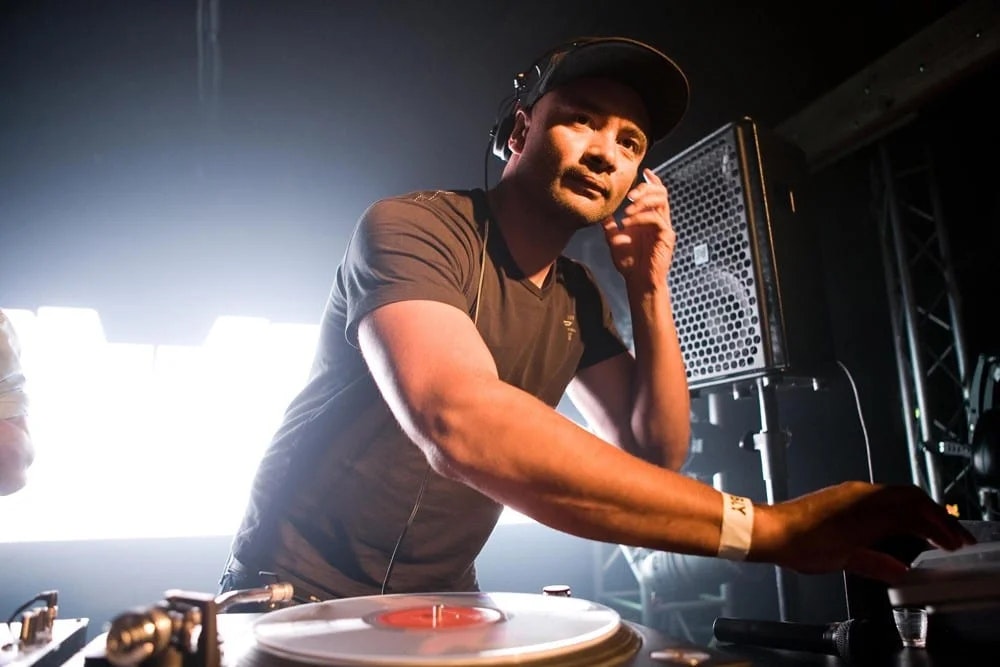
Dillinja remains exasperated by the loss of dubplate culture to digital: “I severely miss the benefits of holding back music. Our best music was held on these metal discs. You paid to get them made and no one could copy them.” The producer shakes his head, then continues, “You’d only give copies to certain DJs that were on the right level. It’d make people want it more! These days music isn’t worth anything.”
Lemon D chips in with a point of his finger: “It was a bit like gardening: you plant a seed over here by giving a DJ a dubplate, he’d go and play it out, and then a few months later it’d be growing its own little scene over in this corner.” Anthems would evolve over a few months across a succession of dubplates, each tested out all weekend, then refined for the next cut. It’s the same way football teams develop training ground set-plays in which a complex strategy is enacted dozens of times before it’s unleashed in a public tournament. Once the finished vinyl pressing was sent to shops, dance floor dynamite was normally guaranteed.
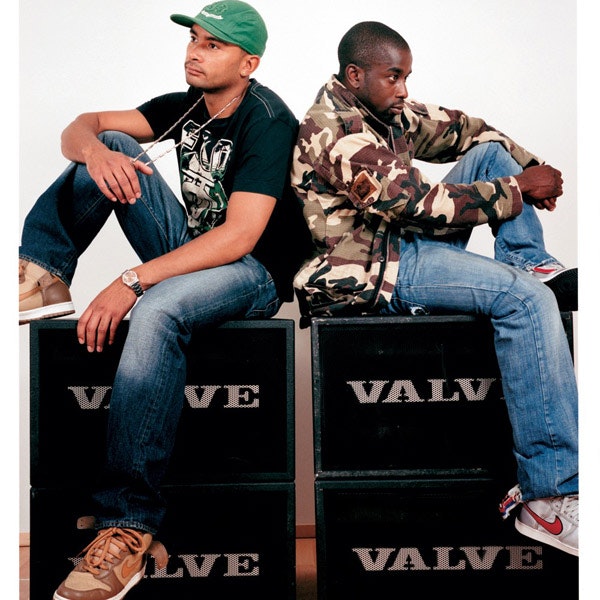
Lemon D remembers the rich era of the mid-’90s when jungle was huge and Goldie’s label was king: “Metalheadz (the label) was right time, right place, right sound. You’d go down to Music House (a popular Jamaican-inspired cutting studio in London), and it was a little social club where people would experiment and cut dubplates for each other. It would define where the music would go in the next couple of months. You’d still be there at 9 PM clinging on to get a dubplate off someone even if you thought you might be missing your gig. You can’t get that now.”
At cutting studios like Music House or Tubbys, these plates would cost anything from £25 to £45 depending on whether they were 7-, 10- or 12-inches. Bigger DJs like Hype – if he was particularly busy – wouldn’t have all day to queue at the more social cutting studios, so he’d spend anywhere from £50 to £90 at the more upmarket Heathmans or Metropolis.
“It’s amazing looking back how much I must have spent,” muses DJ Hype. “You really had to choose carefully. It’s what we called the ‘shit filter.’ Now this ‘shit filter’ has gone. If you had to pay £35 to upload just one song to Soundcloud, then the quality of music would be a lot better. Now anything can exist. And if you went to Music House to cut a DAT of music that was THAT shit, then we’d all be telling you off for even cutting it! It would never get to the dance floor."
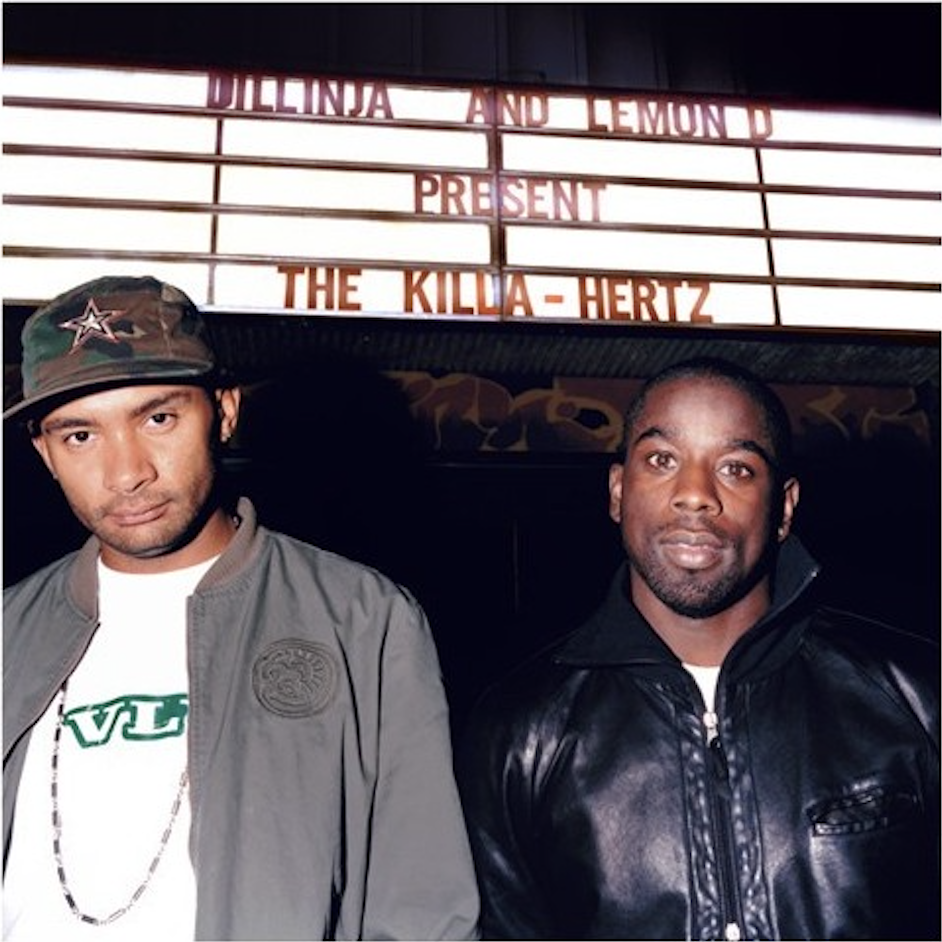
Music now drowns us daily. We are completely surrounded. In the age of YouTube it’s impossible to imagine structuring your entire weekend around going out to hear just one or two records. David Rodigan, a man who shared many afternoons cutting dubs alongside Hype explains: “These were customised recordings that only you could play. When you put it on the turntable and put the needle to the record, that was yours, by definition. It was a way of you publicly saying, ‘These little babies are mine. And they can only be heard when you come and listen to me.’”
Cutting houses naturally became crucial industry watering holes. They existed alongside record shops like Soho’s Black Market or barber shops like Fish where the inner circle of the exploding jungle and drum & bass and – later – UK garage scenes would meet to discuss their nocturnal work. On a Thursday and Friday, all the different species of DJ would descend to cut dubs, socialise, reaffirm their place in the community, network for the latest tunes... and occasionally even fight.
If you had to pay £35 to upload just one song to Soundcloud, then the quality of music would be a lot better. - DJ Hype
“Music House was a hierarchy,” affirms Hype, “Even if you dropped off a DAT to be cut on the Monday, if you turned up on Friday it would still be sitting in a pile waiting, so you had to be there to get it done. There was a little waiting room there, and people like myself and all the regulars would go in pretty bullish and make it happen. Newcomers would get put in the waiting room and it was like, ‘Just sit through there and we’ll call you when it’s your turn!’”
But even the big fish like Hype would get nibbled by bigger fish. “I got that with (DJ Jah) Shaka. I’d turn up and need to cut a few dubs but Shaka’s just arrived and he needs to do 20 and I’m like, ‘Jesus! I’ve got to go!’ Now, I would never try to NOT have Shaka trump me. But it’s like Bob Marley turning up and you having a moan at him, isn’t it? You just need to step aside and let him get on with it. Although the reggae boys were there long before us, we all fitted in with a hierarchy. They aren’t going to get pushed about. When jungle got massive it was about 80% jungle producers and 20% reggae each week. But it depended who was over from Jamaica.”
Hype’s memory underscores how multicultural the cutting house was. “Back then you’d never get a quiet white guy from Reading getting matey with a dread from Jamaica. And you know what? You realized that everyone is not really that different. You might speak different or look different, but you are all on the same page.”
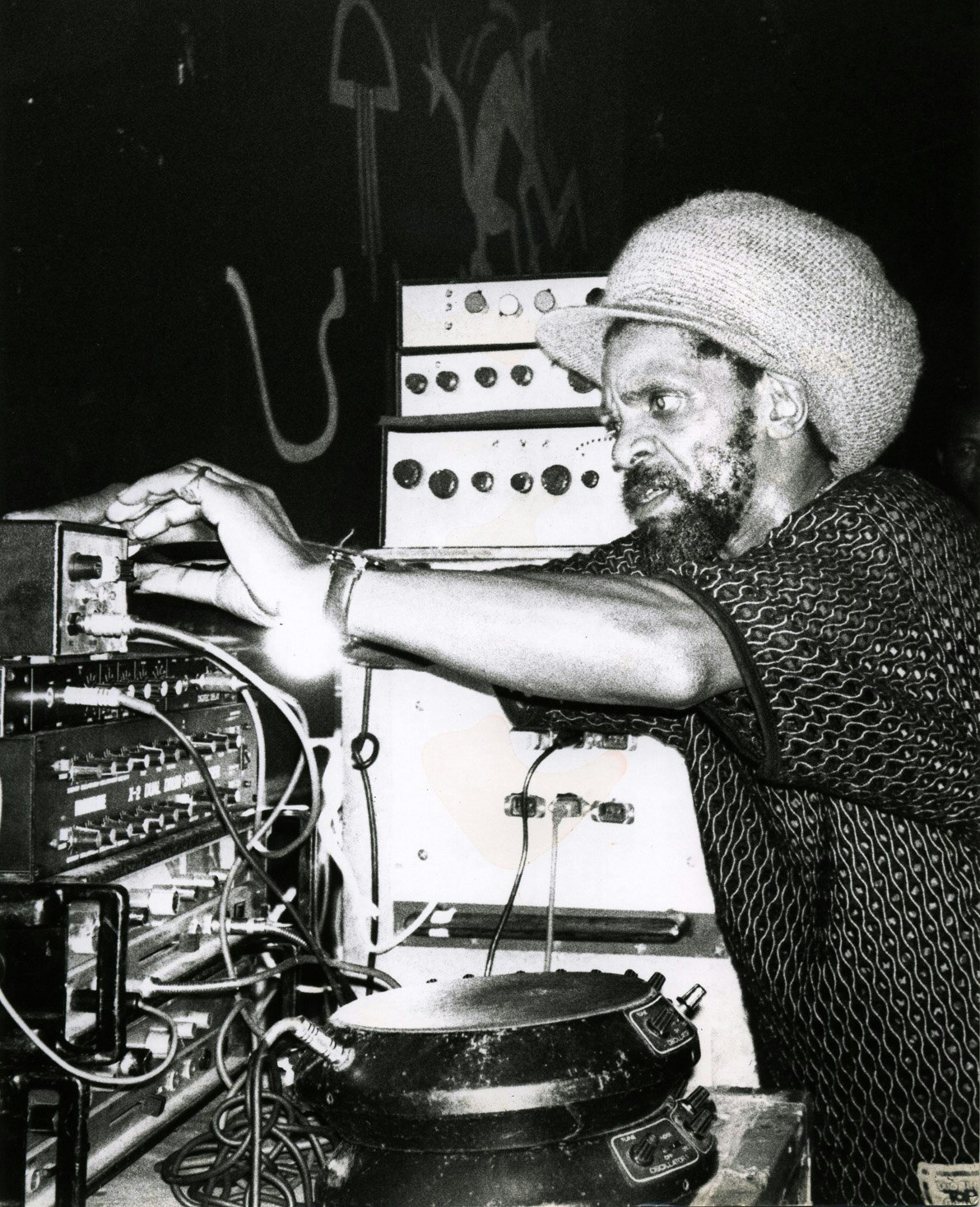
Jah Shaka
Many relationships and collaborations were borne from standing next to like-minded peers. Hype’s work with J Majik was a direct result of loafing about for their turn at the lathe. However with such a strong queue culture of lively characters, things often got spicy. “I used to describe it as a ‘schoolboy playground,’” explains Hype. “We’d all be waiting in this alley in a queue, and whilst we’re all into the same music we are all rivals really. I’m a DJ: you’re a DJ. Sometimes it would get quite divided. I’d always get into trouble because I’m a big gob. Before I’d go in, I’d say to myself: ‘Right! You are going to go there, sit quite, cut your dubs, don’t get wrapped up in any bollocks’ … but you can guess what always happened.”
The chaos and proximity of ears and egos also formed an organic and honourable police force against copying, as Lemon D elaborates: “You didn’t have plagiarism going on. You could cut almost anything musically and it was accepted in that community as the future, and everyone respected that. Back then you could differentiate an artist’s work. You’d be inspired by what you heard there but you’d never steal it like how people do online now. It’s hard to develop a signature sound when everyone has the same tunes. Now everyone has every big tune the day it comes out.
The culture of cutting and sharing dubs was an addictive and closed network. So it wasn’t long before Dillinja and Lemon D decided to do the unthinkable: to get their own lathe. It was a move that – in hindsight – dragged them through a very long and expensive technical journey. “We got the lathe just around the time when we shouldn’t have gotten the lathe!” laughs Lemon D with nostalgic despair.
The Neumann VMS-70 cost them £20,000 second hand. It was old and riddled with a few mind-boggling issues. Their age meant that many parts were discontinued. (In fact, Metropolis Studios set up a secret foundation whose sole purpose was to gather together elusive parts and materials to preserve their service for an inner circle, much like how Polaroid film was once shepherded around close-knit photographer circles.)
As Dillinja continues their fable, it was clear that the pair had gone in over their heads: “We wanted one for years but when we FINALLY got it then it was just a nightmare, it was all set up wrong. It came in and just ruined everything. Towards the end we really grasped it, but then it was too late.” Nonetheless, for a brief moment, Valve Recordings had a dubplate lathe, a great DJ roster and a massive 96k soundsystem custom built for D&B shows.
We wanted a lathe for years but when we FINALLY got it then it was just a nightmare... Towards the end we really grasped it, but then it was too late. - Dillinja
Such was the demand for dubplates, and such was their reputation as great producers, that they soon had a very stressful situation on their hands. Here, the pair seem overcome by history as they excitedly remember the joyous pain of their lathe. Lemon D is gesticulating about sliding pernickety circuit boards in and out of dusty slots, while Dillinja rants about broken needles and the depth of a cut. They both still seem mildly terrified of the complex machine they sold a decade ago.
“The head blowing up was bad! That cost us £3,000 once,” exhales Lemon D ‘Then you’d get some dodgy acetates, with bubbles in them. Dubplates are reject plates used for final mastering, so they had imperfections. If you didn’t spot them, these pimples would break the needles, which were £40 new. You’d spend so much money just making mistakes. The circuit boards sometimes would get funny. These boards would be dry. Remember they are six decades old, so if it was cold it just wouldn’t work!”
Lemon D sits back in his chair: “You’d book someone in, and you’d be there pressing the button repeatedly and the machine is like: ‘Nah, I’m not going to work today,’ then the next person would turn up. Still nothing. Or you had people trying to talk to you and you really had to concentrate to watch the gas. You had to have helium to cool the needle and someone like DJ Hype would be having a full blown conversation with you. This would cause you to make mistakes. So what should have been a £200 session costs you £400, and you’ve made no money. Occasionally you’d blow the head. That cost £8,000 by itself, even when it was broken! There’s only a handful of people in the world that can still fix them, so you’d just send it off to America and just hope the guy was legit.”
It didn’t stop there either: Suddenly Valve required artists with a bit of bedside manner. “Some producers would put in too much top end, or their mix downs were BAD,” cringes Dillinja. “Then you as a producer had to tell another producer that their work was a bit dodgy! They didn’t like that.”
In 2014 the baking hot efficiency of the Internet and its multitude of streaming sites has evaporated any need to visit the cutting house oasis. It’s a redundant, slow moving and expensive museum for anyone aside from the most calculating of reggae soundmen. Looking back, though, it took dubplate culture a bizarrely long time to die. Hype, for one, has adapted effortlessly. When we meet the 45-year-old at Kiss FM he is smashing out his radio show using all sorts of modern technology. But he remains wistful. “Dubplates were CRUCIAL to my development until the digital age. That was the death of that marketplace. I held on till 2010. But if you were a stranger who pulled up outside Music House when jungle was at its peak, in the mid to late ’90s, you’d learn something. You’d see ten BMWs and Mercedes all parked up. And I knew all of those guys when they had nothing.”
As Hype lets me out of his equally plush car 20 years later, the veteran DJ, label owner and producer reflects on that time period one last time: “Back then it was a smaller scene. It WAS special. I didn’t go there thinking, ‘I’m special,’ but when I look back, I suppose we were. We all came from nothing. We’d all learnt that and we’d built up a style of music and culture and being parked outside Music House showed that we were doing good, that we had made good of our lives. I do miss that reassurance.”
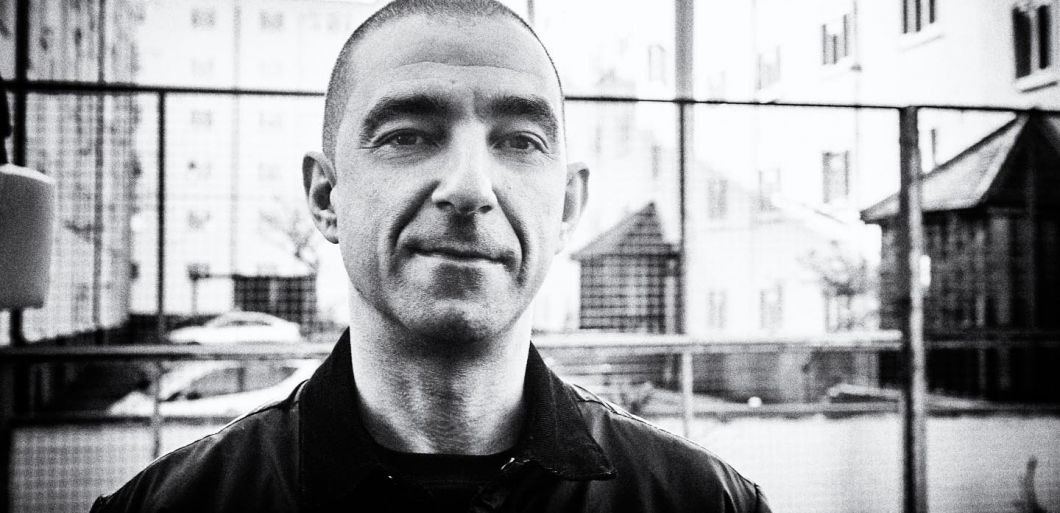
DJ Hype